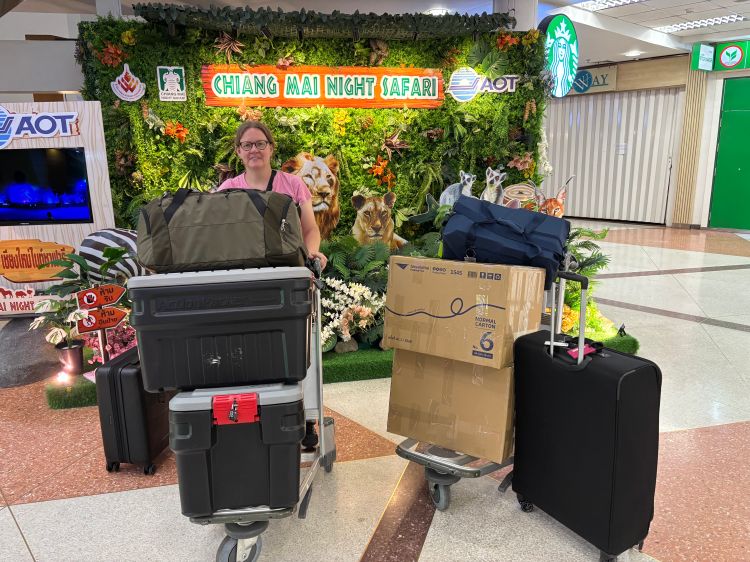From Thailand to East Lansing: 12,000 Beetles Join MSU’s Arthropod Collection
MSU entomologists Anthony Cognato and Sarah Smith traveled to Thailand to secure 12,000 bark beetle specimens, expanding the university’s scolytine and platypodine collection to more than 2,200 species– the most speciose in the Western Hemisphere.

Anthony Cognato, director of the A.J. Cook Arthropod Research Collection (ARC), and collection curator Sarah Smith traveled to Chiang Mai, Thailand to secure 12,000 bark beetle specimens to add to the collection at Michigan State University (MSU).
The 22-hour journey stemmed from a longstanding collaboration between Cognato and Roger Beaver, a British biologist who spent much of his career teaching at universities in Southeast Asia, Africa and the Pacific. After retiring to Chiang Mai, Thailand, he continued researching bark and ambrosia beetle taxonomy and biodiversity. Over the last 30 years, Beaver mentored Cognato and his graduate students, provided rare specimens for study and co-authored 28 peer-reviewed papers and electronic identification resources with Smith and Cognato, including an award-winning monograph.
To make this specimen transfer possible, it was necessary to expand the Coleoptera Collection space on the fourth floor of the Natural Science Building. In 2024, MSU’s College of Agriculture and Natural Resources provided funding for the purchase of temperature- and humidity-controlled cabinets. To fully integrate Beaver’s collection, Cognato estimates that an additional 100 drawers, two cabinets and thousands of unit trays will still be necessary.
The ARC hosts about 1.5 million preserved arthropod specimens from around the world, representing approximately 35,000 species. It has served as an invaluable scientific resource for 158 years, helping researchers identify new species, uncover information about evolutionary relationships and support species conservation efforts.
This addition marks an impressive milestone for the collection. The MSU scolytine and platypodine collection in the ARC has grown significantly, now representing more than 2,200 species, roughly one-third of the total known diversity, making it the most speciose collection in the Western Hemisphere.
The new specimens will be checked by Smith and Cognato to ensure that they are correctly identified. Each specimen will receive a label indicating that it came from Beaver’s collection. Specimens will be transferred to unit trays with existing specimens from the ARC (if present) and arranged phylogenetically by tribes, then alphabetically by genus and species.
“The knowledge and identification tools developed from these specimens will provide Michigan and national insect diagnosticians with the means to identify potential pests and take immediate action to prevent their establishment,” said Cognato.
With one of the main goals of the ARC being to democratize data, efforts will now focus on growing, curating and digitizing the scolytine and platypodine specimens to improve identification of unknown species, expand public access to this information and provide data to researchers worldwide.



 Print
Print Email
Email
